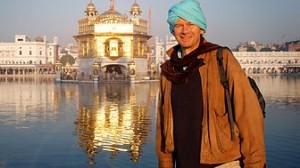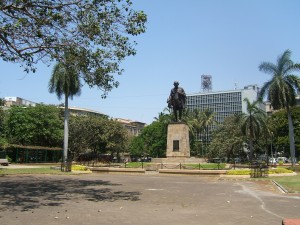Arundhati Roy’s essay ‘The Doctor and the Saint’

If you read one book this year, it should be not even the book itself, but the introduction to the book: Arundhati Roy’s essay ‘The Doctor and the Saint’, attached to the reissue of a lost classic, Annihilation of Caste by B.R Ambedkar, the leader of the Untouchables at the time of Indian Independence.
In cool and merciless prose, Roy blows away the cobwebs that obfuscate all discussion of this most shameful aspect of Indian life. There are still around 100 million Untouchables, or Dalits as they are now more commonly known – and , as I saw when interviewing her some 15 years ago in Kerala, it is a prejudice that is practised in India by Christian and Muslim communities as well as Hindu ones.
You can watch The Exotic Marigold Hotel or The Darjeeling Limited and be blithely unaware of the realities of caste as a system that still preordains life for so many and so narrowly.
As she asks: ‘Other contemporary abominations like apartheid, racism, sexism, economic imperialism and religious fundamentalism have been politically and intellectual challenged at international forums. How is it that the practice of caste in India – one of the most brutal modes of hierarchical social organisation that human society has known – has managed to escape similar scrutiny and censure? Perhaps because it has come to be so fused with Hinduism, and by extension with so much that is seen to be kind and good – mysticism, spiritualism, non-violence, tolerance, vegetarianism, Gandhi, yoga, backpackers, the Beatles – that, at least to outsiders, it seems impossible to pry it loose and try to understand it.’
The introduction, at 125 pages, is longer than the book it presents. In any other writer this might be presumption; with Arundhati Roy every last word is justified. She has already proved herself a formidable polemicist, but this may have been her most important contribution to the debate about India’s future – and one which has already stirred up a great deal of controversy, both because she attacks Gandhi and because some Dalit radicals have complained – unfairly in my view – that she has tried to appropriate their voice.
‘The Doctor and the Saint’, as an introduction to Annihilation of Caste by B.R Ambedkar, has just been published by Verso in the UK.
The Indian edition by Navayana has the best cover – as here – and has been carefully priced to make it accessible to a wide readership, although there have been problems finding distributors for it in some states due to its controversial nature. I bought it on my last day in Delhi and read it in the next 24 hours as I travelled back to the UK, learning more about India than I had in the previous two weeks in the country.



